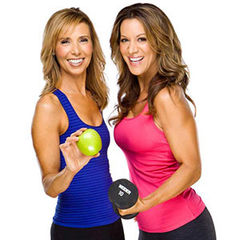Cakes. Cookies. Brownies. ‘Tis the season for lots of sweets. But lots of treats equal a lot of sugar and calories, which is a recipe for weight gain and inflammation. So what’s a person to do during the holidays? Should you forgo all things sweet at the risk of feeling deprived? Is there an alternative to sugar that you can use in your favorite recipes that will allow you to have your cake and eat it too?
In recent decades, along with the rise in obesity and diabetes, we have also seen the creation of numerous artificial sweeteners. Commonly found in diet sodas, sugar-free gum, and other “diet” and diabetes-friendly foods, artificial sweeteners play the role of a sweetener, but without the increase in blood sugar levels that come with sugar. While there is much controversy regarding the actual efficacy of these sweeteners and their impact on health, many still ask the question, “Can you use them instead of sugar in your recipes?”
The answer is both no and yes. Let’s first understand a little more about the role of sugar in baking. Baking is science. Like a chemistry experiment, all the ingredients in a baked treat work together to create a chemical reaction so that you get the desired end product. Sugar plays a number of roles in baking, including:
- Sweetener
- Browning agent
- Moisture
- Leavening
- Imparts chewiness and crispness
Knowing this, once you replace the sugar in a recipe, your product will end up much differently. While many people prefer to replace white, refined sugar with more natural sweeteners—such as honey, maple syrup and coconut sugar—all of these will still increase blood sugar levels as they are still forms of sugar. If the goal is to reduce the impact on blood sugar and insulin production, then using an artificial sweetener is a better option. Unfortunately, most of them are not suited of high temperatures, as heat will cause them to break down and become bitter. Others are not suitable because they will not contribute the desired browning, moisture or texture.
The following covers the most common artificial sweeteners and each one’s ability to be used in baking:
SACCHARIN: (e.g., Sweet‘N Low)
It can replace some of the sugar, but will leave a metallic aftertaste and may result in lumpy texture.
300-times sweeter than sugar
1 tsp. sugar = ½ packet or ½ tsp. bulk Sweet‘N Low
ASPARTAME: (e.g., Equal, Nutrasweet)
Not for baking as it loses sweetness in high heat. May work in custards and puddings.
200-times sweeter than sugar
1 tsp. sugar = ½ packet
ACESULFAME POTASSIUM: (e.g., Sunette)
Can be used in baking, but will yield a slight bitter aftertaste
200-times sweeter than sugar
1 tsp. sugar = ½ packet
NEOTAME by Nutrasweet
Developed to be used in baking as the sweetness holds up to high heat with no metallic or bitter aftertaste.
8,000-times sweeter than sugar
Not widely available for purchase
STEVIA (e.g., Turvia, PureVia, Stevia in the Raw)
These are not pure stevia, but a form of stevia known as Rebaudioside A. It is often mixed with erythritol after processing.
Heat stable so can be used in baking; however, these sugars do not caramelize or crystalize so you will not get the browning effect desired in certain baked goods. Not appropriate for use in meringues.
200 to 300-times sweeter than sugar
1 tsp. sugar = ½ packet
SUCRALOSE (e.g., Splenda)
Good for baking as long as you use the Splenda baking formulation, which has low-calorie fillers added for bulk. Sucralose is a distant cousin of sugar as it is made from sugar.
600-times sweeter than sugar
1 tsp. sugar = ½ packet or ½ tsp.
ERYTHRITOL (e.g., Nectresse)
Good for baking with no aftertaste; has fewer calories than sugar, but is not zero-calorie like many other artificial sweeteners.
150-times sweeter than sugar
1 tsp. sugar = ½ packet or ¼ tsp.
Although it is tempting to turn to artificial sweeteners to reduce sugar, carbohydrates and calories in baked goods, we recommend that you stick with natural sweeteners such as raw honey, pure maple syrup, and coconut sugar and try to increase the healthy fats in your recipes and to help balance out the macronutrient content.




 by
by 




 by
by